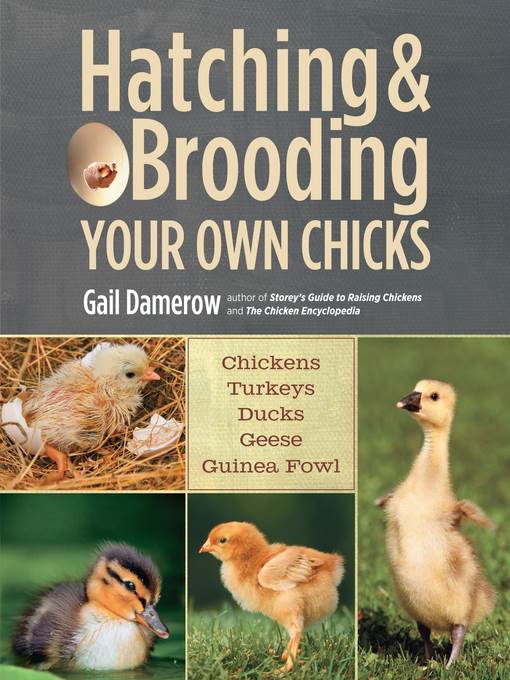
Hatching & Brooding Your Own Chicks
Chickens, Turkeys, Ducks, Geese, Guinea Fowl
کتاب های مرتبط
- اطلاعات
- نقد و بررسی
- دیدگاه کاربران
نقد و بررسی

January 14, 2013
This know-all chicken manual could serve as a college textbook for the former 4H-er bound for a life of chicken raising, or an intricate tome for the many chicken enthusiasts eager for a detailed cluck for their buck. Damerow (The Chicken Encyclopedia), a chicken farmer in Tennessee, with almost 800,000 copies of chicken-oriented books in print, takes us from purchasing eggs vs. chicks to the intricacies of humidity and candling. "Chicks" in the title is a bit misleading, as "sexing," correcting birth defects with duct tape, and other troubleshooting chapters and charts are included for turkeys, ducks, guinea fowl, and geese as well. Students of chicken rearing are taken from improvisational housing after hatch (bathtubs, storage tubs) to creative takes on the incubator relying on cardboard boxes and woodworking projects. Damerow also cover the basics (and beyond) of malpositioned embryos, panting hatchlings, and the miraculous, temporary chick "tooth," which starts the eight-hour pipping process of pecking a starter hole for emerging from the shell. From eating schedules to euthanasia, Damerow addresses everything great-grandpa knew about birthing baby cacklers and quackersâand then some.

July 1, 2013
Damerow (The Chicken Encyclopedia: An Illustrated Reference) has published extensively on many aspects of farming, but is probably most recognized for her books about raising chickens. With more than 800,000 copies of Damerow's books in print, her contributions have helped spark a vibrant urban farming movement. Her latest work, meant for the advanced layperson, provides detailed information on a relatively specialized component of raising fowl. This emphasis, while limiting the overall appeal, will be a welcome boon for those researching the brooding process, and is especially noteworthy for the unusual inclusion of material on hatching a variety of fowl, including ducklings, goslings, turkey poults, and guinea keets. Background information, illustrations, and thorough instructions abound throughout this thoughtfully organized work. In addition to sections devoted to the selection, care, feeding, and development of eggs and chicks, this guide features a glossary and a comprehensive index. For those interested in a general omnibus, it's overly narrow, but for those seeking reliable instructions on brooding and hatching a variety of fowl, the book is outstanding. VERDICT A thoughtful, extensive guide for the serious amateur but too detailed and focused for beginning urban chicken farmers.--Dan McClure, Pacific Northwest Coll. of Art Lib., Portland, OR
Copyright 2013 Library Journal, LLC Used with permission.

December 15, 2012
Once a chicken fancier has decided to raise birds for home or commercial markets, a choice arises between buying the chicks or breeding and hatching them oneself. Damerow draws on her own experience for this comprehensive and accessible guide to all matters incubatory. With lots of photographs and plenty of practical data, she outlines parameters for heat, light, feed, and water sources so critical to chicks' nutrition and growth. She also discusses the hatching process and the diseases that can appear in even the best-managed hatcheries. She explains the mysterious method for determining the little birds' sex and how to assess their health from body language. Damerow's guidance embraces not just chickens but also turkeys, ducks, geese, and guinea fowl. Burgeoning interest in locavorism and in humane animal breeding make this a potentially useful addition for library collections in just about all communities, not just for traditional rural institutions.(Reprinted with permission of Booklist, copyright 2012, American Library Association.)

























دیدگاه کاربران